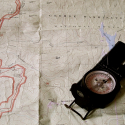
Major Mike Sadler passed away this month, aged 103 years. This British Army officer from the Second World War lived an extraordinary life. Though, knowing a bit about him, the word “extraordinary” seems insufficient. Among so much, Sadler was a master of land navigation. Sadler was one of the first members of the Special Air Service, an elite special operations regiment created in the early years of the war. His task was to guide his patrol in their modified Willys Jeeps, all sporting Vickers K machine guns, along the North African coast to destroy Axis bases and airfields. Their strategy was effective because, thanks to Sadler and his traditional land navigation skills, the SAS could hide deep in the vast desert to the south where the Germans believed no one could possibly navigate, let alone survive — with its featureless landscapes, blistering sun, and constantly shifting dunes, some 100’s of […]
Read more →
